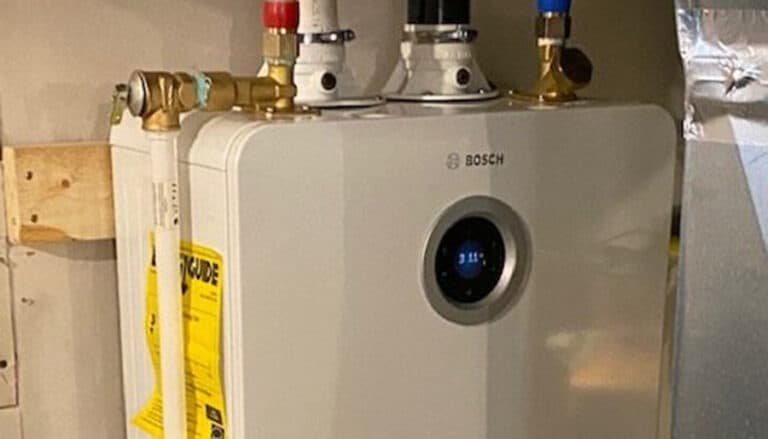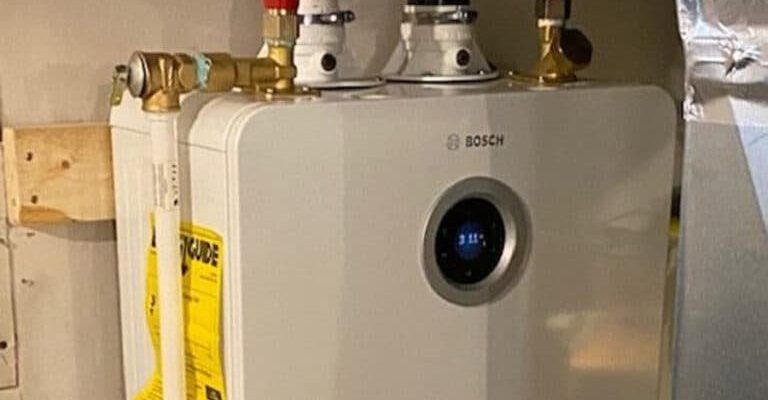
Imagine your water heater as a big kettle that heats up water for your showers, dishes, and laundry. The temperature sensor in this kettle tells the heater how hot the water needs to be. But if the sensor isn’t working right, it’s like the kettle not knowing when to stop boiling. This can be inconvenient, but more importantly, it might be unsafe. Your main concern should be understanding whether it’s safe to continue using your Bosch water heater when this error pops up, and if not, what steps you should take next.
Understanding the E2 Error Code on Bosch Water Heaters
So, what exactly does that little E2 code mean? As mentioned earlier, it indicates an issue with the temperature sensor, or in more technical terms, a “thermistor.” This small but mighty component plays a crucial role in maintaining the safety and efficiency of your water heater. When functioning properly, it helps regulate the water temperature, ensuring it doesn’t get too hot or shut off unexpectedly.
When the E2 error shows up, think of it as the heater trying to tell you there’s a glitch in its communication system. This can happen for several reasons. Like a phone screen that freezes when too many apps are open, your sensor might stop working because of a wiring issue, a faulty sensor, or even dirt buildup. None of these problems are necessarily catastrophic, but they do need addressing to ensure your heater runs smoothly without causing any safety concerns.
Here’s the deal: if you don’t pay attention to this error, it could lead to inconsistent water temperatures. Imagine not knowing if you’re about to step into a hot or cold shower! Worse, it might prevent your heater from shutting off when it should, potentially leading to overheating.
Is It Safe to Ignore the E2 Error?
You might be wondering, “Can I just ignore this error and carry on?” Well, ignoring the E2 error isn’t advisable. While it may not spell immediate disaster, it is better seen as a warning light in your car. It doesn’t mean your car is about to explode, but it does mean something’s not quite right. Continuing to use the water heater without fixing the underlying issue could lead to more significant problems down the line, such as increased energy costs or further damage to the heater.
Imagine wearing down a pair of shoes with a small hole in them; if you keep using them without repairing, the hole will only get bigger and more noticeable. The same principle applies here. While you might still get some hot water, it’s not worth the risk of increasing the damage or compromising your safety.
So, what’s the next step? First, make sure to consult your water heater’s manual. It often has troubleshooting tips and safety information that can be helpful. If the code persists, it’s a good idea to contact a professional technician. They can accurately diagnose the issue and suggest whether a repair or replacement of the sensor is necessary.
Troubleshooting and Next Steps
Let’s walk through some steps you can take when faced with the E2 error. Start by turning off the power to your water heater. Safety first! This action helps prevent any potential electrical issues while you inspect the unit. After powering down, try gently cleaning any visible dirt or debris from around the sensor area. Sometimes, like dust on a computer fan, a simple clean can work wonders.
If cleaning doesn’t resolve the issue, check the wiring connected to the sensor. Look for any loose connections or frayed wires. These could disrupt the sensor’s function, much like a tangled set of headphones that suddenly cut out your favorite song. If you’re comfortable and confident, you might tighten or adjust these connections. However, if you’re unsure or uncomfortable with electrical components, it’s best to call in a professional.
Finally, if these simple steps don’t fix the problem, the sensor might need replacement. This can be a more complex job, akin to replacing an integral part of a machine, and usually calls for expert assistance.
Preventative Measures and Final Thoughts
Now, let’s talk about ways to prevent this error from happening in the first place. Like routine car maintenance, keeping your Bosch water heater in check can save headaches later. Regularly cleaning and inspecting the unit can help catch potential problems early. It’s also wise to schedule periodic professional check-ups, ensuring all parts, including the temperature sensor, are in good working order.
Installing a surge protector for your heater is another good step. Just as it protects your computer from unexpected power surges, it can help preserve the delicate electronics in your heater. Lastly, always use your water heater within the parameters recommended in the user manual—pushing it beyond these limits can lead to malfunctions.
In conclusion, while seeing an E2 error code on your Bosch water heater can be a bit unsettling, taking prompt and informed action is key to maintaining safety and functionality. By following these steps and tips, you’ll ensure your heater continues to provide the hot water you rely on, safely and efficiently. Stay attentive, and don’t hesitate to call in a professional when in doubt—peace of mind is worth it!
